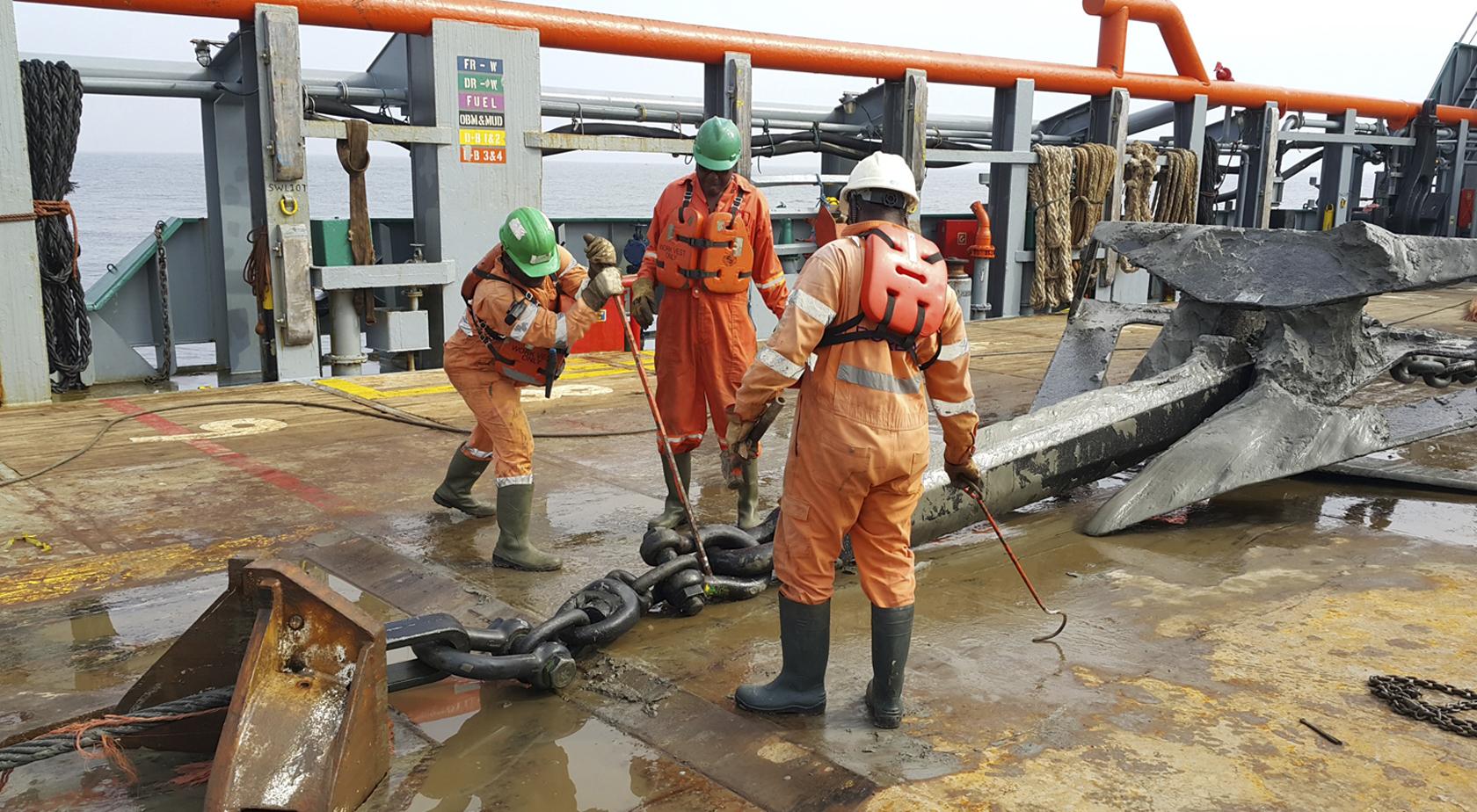
Pipe laying in Mexico: 600 anchor moves performed
After being held up in port for 6 days due to bad weather, the pipe laying operation in Mexico finally began on October 21, 2015. Rémi Xiberras, Captain of the Bourbon Liberty 207, tells the story.
October 21, 2015, 1600 hours: BOURBON's Bourbon Liberty 207 begins a pipe laying operation over the Lakach oil and gas field. Two pipelines, each one 38km long, must be laid in 20 to 50 meters of water. "It's the first continental offshore development project in Mexico," explains Rémi Xiberras, the captain of the vessel, one of 2 AHTS vessels mobilized for the mission. Her role? Moving the barge, Castoro 10 (from the company, Saipem), tasked with welding the sections of pipe together. "In concrete terms, this consists of raising the 8 anchors connected to the barge, then repositioning them a bit further along, in order to move the barge as welding progresses," the captain explains.
So far, 7.4 km of pipe have been laid, with 600 anchor moves performed. It is a complex, painstaking task, since the barge has to position the pipes on the sea bed. "We have mobilized all of BOURBON's cutting-edge skill in the field of positioning and anchor handling. The logistical support of our Mexican joint-venture, Naviera Bourbon Tamaulipas, has also proven quite valuable," Rémi Xiberras adds.
"We have mobilized all of BOURBON's cutting-edge skill in the field of positioning and anchor handling."
RÉMI XIBERRAS
CAPTAIN OF THE BOURBON LIBERTY 207
ADAPTING TO CONDITIONS
When Rémi Xiberras arrived on-site on October 13, 2015, the barge was already in port. "Operations had been scheduled for that day, but we remained on stand-by until October 20th, because of bad weather," he explains. Things did not stop there. Several times during the mission, it was necessary to tow the barge back to port in order to shelter it from storms. "An AHTS may be powerful and versatile, but it is not invincible in bad weather. Those are the times when you have to be aware of the vessel's operational limitations and know when to stop, so as not to put the crew's lives at risk," the captain stresses.
Compliance with safety rules is vital at all times. The safety aspects were also the subject of an in-depth analysis prior to operations. "Together with our client, Saipem, we reviewed our safety standards, in order to establish a custom set of best practices. They take into account the various aspects of the project, particularly handling anchors weighing 7 tons a piece," says Rémi Xiberras.
"We reviewed our safety standards, in order to establish a custom set of best practices."RÉMI XIBERRASCAPTAIN OF THE BOURBON LIBERTY 207
A SUSTAINED OPERATIONAL PACE
Rémi Xiberras is used to spot operations like these, where the vessel is chartered for a single mission under a short-term contract. Captain of the Bourbon Liberty 207 since 2014 - after being a Surfer pilot, lieutenant on a PSV, and mate aboard an AHTS with BOURBON - he has already fulfilled 7 contracts in as many different countries. His mission before this one: leaving Abidjan to go tow a jack-up rig in Trinidad and Tobago and bring it to the coast of Surinam, then tow it back to Trinidad and Tobago, after a 2 month drilling operation.
Total distance: 2 x 500 nautical miles. "There again, the weather conditions were difficult," says Rémi Xiberras. "In both cases, we had to work in fits and starts, moving like an accordion. We couldn't do anything for several days, and then conducted some very intense operations in a short period of time. It's also what makes this job so exciting," he concludes.


